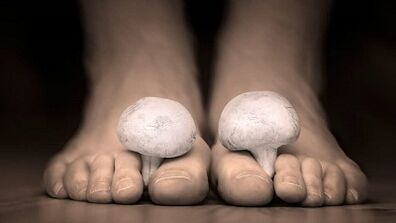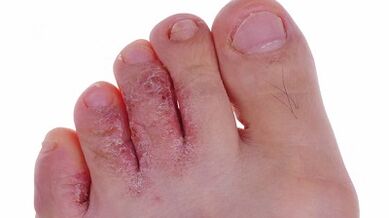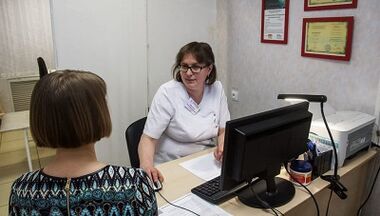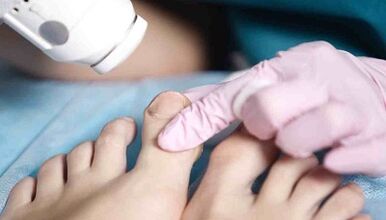Among the most common mycoses is the foot fungus.According to statistics, every fifth person is the carrier of the pathogen of this disease.To combat fungal microflora on the foot, antimycotic drugs are prescribed, which are designed for external and internal use.At the initial stage of the development of the disease, it is appropriate to use folk treatment methods.
The causes of the foot fungus

The feet fungus are easy to pick up when visiting public places with high humidity.
People who neglect personal hygiene rules are affected by a fungal infection.Dermatologists often diagnose the disease in patients regularly visiting public places in which increased humidity is observed.It is in such areas that the fungus lives, since ideal conditions for development and propagation are created here for him.Therefore, there is a high risk of pathogen infection in pools, saunas, baths and shower cabins in gym halls.He dies only during prolonged boiling in water, heated to a critically high temperature.
Many men and women are infected with a fungus of the feet in public places when they do not put on slippers and do not observe elementary preventive measures.Diseases are subject to faces who measure someone else's shoes or walk with bare feet on carpets in public places or visiting.
If a person is infected with a fungus of the feet, then he is potentially dangerous to surrounding people.All because the disputes of pathogenic microorganisms live in the upper layers of the epidermis, which tends to exfoliate.Examant skin cells are in the external environment.The fungus may remain on them for a long time.In this way, disputes are on carpets and other surfaces in the house or public place.
It must be remembered that the symptoms of infection after infection of the feet are not immediately manifested.The first signs of malaise make themselves felt after a while.So their absence in the first days after visiting a public place with high humidity does not yet mean that a person managed to avoid infection.
Risk factors
The absence of personal hygiene greatly increases the chances of infection of the fungal infection of the legs.
The fungus on the feet is a common disease that adults and children can become infected.The most susceptible to him people who are at risk.As a rule, people with weakened immunity fall into it.It is he who protects the human body from various kinds of pathologies, including mycoses.If the immune system is weakened, then it will not be able to protect it from the disease.
The immune system can restrain the activity of pathogenic microflora for a long time, the fault of which a person develops a fungus on the legs.The minimum failure caused by a slight malaise or stress changes this situation for the worse.Negative factors reduce the body's defenses, allowing the fungus to develop active life in the most weakened place.

The fungus on the soles of the legs may appear in a person who is affected by one of the following unfavorable factors:
- Dermatological diseases that are characterized by a chronic course;
- Taking drugs that aggressively affect the body;
- Abundant sweating in the legs;
- Frequent experience of stress;
- Non -compliance with personal hygiene rules;
- Hormonal failures.
The probability of development at the foot of mycosis helps to avoid interaction with these factors.Otherwise, a person will have to start looking for a mushroom remedy that will help to cope with the disease and prevent the appearance of complications.
The absence or insufficient observance of personal hygiene, along with abundant sweating, greatly increases a person’s chances of infection with mycose infection.This is because in this way it creates optimal conditions on its body for the propagation of the pathogen.An additional factor, which also affects infection, is to wear socks from synthetic material and too close shoes of a closed type.
Hormonal disorders in the body have no less influence on the development process of the foot fungus.They leads to a decrease in immunity.This reason explains why adolescents often get this infection.At the time of hormonal restructuring, they begin to suffer from excessive sweating.The immune system will temporarily weaken.These conditions are enough to get the fungus of the feet.
Medicines of certain groups can lead to a decrease in immunity.Typically, antibiotics and corticosteroids are to blame.Chronic fatigue, constant stress and malfunctions in the work of the nervous system are another reason for the deterioration of human condition.These factors increase the body's vulnerability to various pathogenic bacteria and fungi.
Increase the chances of infection with fungal infection dermatological diseases.They include dermatitis, lichen and eczema.They negatively affect the state of the immune system.In addition, these pathologies create conditions that are required for the development of the fungus on the surface of the skin.Cases of the appearance of mycosis as a complication of one of their above dermatological pathologies are not excluded.
It is very difficult to avoid infection of the fungal infection of the feet in the following cases:
- In the presence of damage on the skin of the feet;
- When wearing tight shoes;
- In case of vascular disease;
- With diabetes;
- In the presence of ingrown nails on the legs.
Any violation that leads to problems with blood circulation in the legs, adversely affects the state of local immunity in a vulnerable zone.And this only increases the chances of infection with a fungal infection.
Types of the disease and their symptoms
Few people know what the fungus looks like on the foot.To have ideas about this disease, it is enough to familiarize yourself with its symptoms.In total, there are several forms of the fungus of the feet that differ from each other by the clinical picture.
Doctors call a number of symptoms that are common to the fungus of all kinds.Among them, itching and burning in an infected place are distinguished.Patients also have peeling of the skin, falling off its particles and irritation of the epidermis.On such signs, patients and doctors suspect the development of fungal infection on the legs.
Interdalz dermatophytia

Symptoms of the fungal variety of legs are interdigital dermatophytia.
This form of pathology is considered the most common.In its course, the fungus is detected mainly between 4 and 5 fingers of the foot.The disease is recognized by the cracks that appeared in the affected area.If the patient suffers from a wet form of the disease, then the skin looks swollen.With dry form, peeling and falling off its particles, which were subject to infection, are observed.
Quite often, interdal dermatophytia is accompanied by the development of a bacterial infection, which is joined in the process of activation of pathogenic microflora on the foot.Very quickly, the disease becomes neglected if you do not start fighting it.By this moment, the symptoms of mycosis are enhanced.The patient is constantly experiencing severe pains, which are almost impossible to get rid of.
Mokasin -like shape
This type of disease is also called the "foot athlete."The disease has a severe course.The development of improper therapy or its complete absence leads to its development.With this lesion, nail plates suffer.They change their usual shade to black, yellow or blue.The nails also lose natural transparency.With the course of the disease, they simply pour and crumble, and their surface is very deformed.
The signs of this form of the disease include peeling of the foot and its coating with scales.They are localized on the sides.The skin of the sole is peeling, and the skin covering its skin will grow off.With its appearance, the leg begins to resemble a moccasin.
Vesicular (ulcerative) form
This form of the disease is not as common as other types of foot fungus.It is characterized by the appearance of rashes in an infected place, inside of which there is a muddy fluid.These blisters are located over the entire surface of the foot.Periodically, they burst, as a result of which painful sores are formed in their place.
The additional signs of a fungal disease include unbearable itching, stratification of the skin, fingers, as well as burning and peeling of the epidermis.In patients with such diagnoses, swelling of the feet is observed.An increase in body temperature is not excluded.
The easiest way to cope with vesicular pathology, since the causative people who cause it are localized on the surface layers of the skin.The rest of the fungus is contained in blisters.The treatment process can only be tightened with a bacterial infection.
What is the danger of mycosis of the foot
The fungal damage to the foot is one of the dangerous conditions that cause significant harm to the health of an infected person.With the development of this pathological process, serious complications often arise.The body is not able to prevent such a course of events, since it cannot do the power of aggressive pathogens due to an too weakened immune system.
Any scratch in a affected area does not heal for a long time due to the fungus.With improper care of it, the probability of connecting a secondary infection increases.In patients with such a disease, eczema and dermatitis often develop, which strongly delay the treatment of mycosis of the feet.
Patients can suffer from allergic reactions on the skin, which are caused by the abandoned fungi of products of their active life.
A fungal infection causes irreparable harm to a person, since it has the ability to penetrate the slightest cracks on the feet.Mycoses also provoke the formation of warts at the infected place, which can only be removed by surgical methods.
Diagnostics

A professional dermatologist will be able to identify which pathogen caused defeat of the feet.
The treatment of fungal damage to the feet is engaged in a dermatologist.It is to him that should go to the reception in case of suspicion of the development of this disease.If necessary, he will redirect the patient to another specialist, if an additional consultation is required that simplifies diagnostics and selection of therapy for infection.
The doctor will talk with the patient on the topic of his complaints and carefully examine the infected feet.After he will prescribe a number of tests that will help establish the causative agent of the disease and its sensitivity to individual drugs.
Typically, patients undergo such studies:
- Microscopic diagnosis, which provides for the treatment of potassium hydroxide taken from a patient with hydroxide;
- Examination of the fabric using Wood lamp;
- Conducting a sowing of biomaterial for special environment designed for mushroom growth.
After conducting all the necessary diagnostic measures, the doctor will be able to say exactly which causative agent caused the defeat of the skin of the feet.
Methods of treatment
Treatment of fungal damage to the feet is prescribed by a competent specialist.Only in this case can one count on a positive outcome of the complete course of therapy.It itself is based on several principles:
- Conducting the fight against the pathogen.At the early stage of the development of pathology, patients are prescribed drugs of local action.Creams and ointments help to defeat pathogenic microorganisms.If the case is launched, then system medicines in the form of capsules or tablets are additionally prescribed;
- Increasing immunity and improving blood circulation in the damage zone.Such actions are positively reflected in the result of treatment;
- The implementation of desensitizing therapy.Often mycosis of the feet is accompanied by allergic reactions.To eliminate them, taking certain drugs that improve the general condition of a person is required.
If the course of treatment proposed by the doctor is based on these principles, then he will bring a positive result.
External funds
The smallest effect on the body differs in local drugs designed to get rid of stop mycosis by applying them directly to the lesions.How to get rid of the fungus with their help, the patient will learn during a visit to a specialist who is prescribed this therapy.
Local drugs are effective in the initial stages of development of stop mycosis.The most useful they are in the case of use as part of a complex treatment.
Gels, ointments and creams must be applied only to cleansed and dried skin.They are rubbed with massaging movements.This procedure is usually recommended for 7-10 days.The therapeutic agent needs to be applied not only to the problem area, but also to neighboring tissues in order to prevent their infection with a fungus.
For adults and children, different local products are offered for the treatment of foot fungus.If the child’s therapy is required in a child, then the choice of a suitable medication must be trusted with a competent specialist, since not all drugs represented by modern pharmaceutical companies are suitable for young patients.
Before using the drugs, you must carefully study its instructions for use.It is also required to coordinate with the attending physician the duration of treatment with the prescribed local remedy.
Pills
With damage to the legs, a fungal infection is prescribed drugs.
To cure mycosis on the foot of the legs alone, only by local means it is not always possible.In this case, the specialist knows how to fight the fungus.With complicated and advanced forms, it is required to include system medicines in the therapeutic course, which are intended for oral administration.The selection of a suitable drug should be carried out after the physician determines the type of infection pathogen and its sensitivity to active substances.The presence of certain contraindications for the treatment of one or another remedy is also taken into account.
The use of systemic remedies for therapeutic purposes is contraindicated in patients who have disturbances in the work of the kidneys or liver.They are also prohibited by pregnant and lactating women.The group of contraindications also includes increased sensitivity to the active component of the medicine.
Folk remedies
To relieve the patient's condition and reduce the degree of manifestation of the symptoms of the disease, folk methods help.
A good result in the treatment of fungal damage to the feet is shown below the presented means of non -traditional medicine:
- Salt baths.They are prepared from 1 liter of hot water and 1 tsp.large salt.In the resulting solution, it is recommended to steam the infected feet for 15-20 minutes;
- Compresses with hydrogen peroxide.In the antiseptic, it is necessary to carefully moisten the cotton pad.After it is applied to the infected area of the leg for 1 hour.Repeat this procedure 2-3 times a day;
- Ointment with wood resin.Sent raw materials must be mixed with fat.As a result of such a combination, a fairly thick mass should be obtained.It needs to be applied to the regions affected by the fungus on the legs twice a day.
It is best to use folk remedies as auxiliary therapy to enhance the effect of a medical course.
Hardware treatment of fungi

Hardware therapy is well suited for processing the feet, which are often infected with a fungus.
In some cases, doctors recommend that their patients with a fungus with their feet agree to hardware therapy.Such measures are required if the mycelium grows too quickly, because of which medicines do not have time to suppress its activity.Laser correction helps to cope with the disease in this situation.A beam specialist cauterizes mycelium.After such an effect, the patient feels relief, as he is ceased to bother the symptoms of infection.
Laser correction is suitable for processing the feet and nail plates, which are often infected with a fungus.A ray simply led disputes and creates a condition unsuitable for the normal life of an infectious pathogen at the destruction site.
After laser correction, the patient will have to take drugs that will help to achieve a full recovery.
It should be borne in mind that hardware therapy does not give a guaranteed positive result if the patient neglects hygiene rules and refuses to take medications with antifungal effects.
General rules during treatment
The key to successful treatment of the foot fungus is to comply with the general rules for caring for affected limbs, shoes and other objects that may be subject to infection.
All the patient’s shoes must be disinfected without fail, since infection pathogens may remain in its inner surface.The same applies to socks and other wardrobe items.They are recommended to be treated with special sprays, which contains disinfectants.For this purpose, many compounds are suitable, which differ in antimicrobial effects.
Throughout the treatment, the patient should observe a diet that eliminates the use of a large amount of sugar.It is also worth abandoning the application of decorative nail polish.Instead, it is recommended to use iodine or other antiseptic of this type.
Prevention measures
To prevent infection with mycose infection of the feet, it is necessary first of all to take care of the state of your immune system.Periodically it needs to be strengthened.It is necessary to treat diseases that worsen blood circulation and reduce the body's defenses.
It is important to comply with the rules of sanitation and personal hygiene while visiting public places with a high level of humidity.
You can use only a personal towel, slippers and body care items.
In the summer, it is necessary to fight excessive sweating of the legs.To solve this problem, you need to choose shoes that are normally ventilated.
















